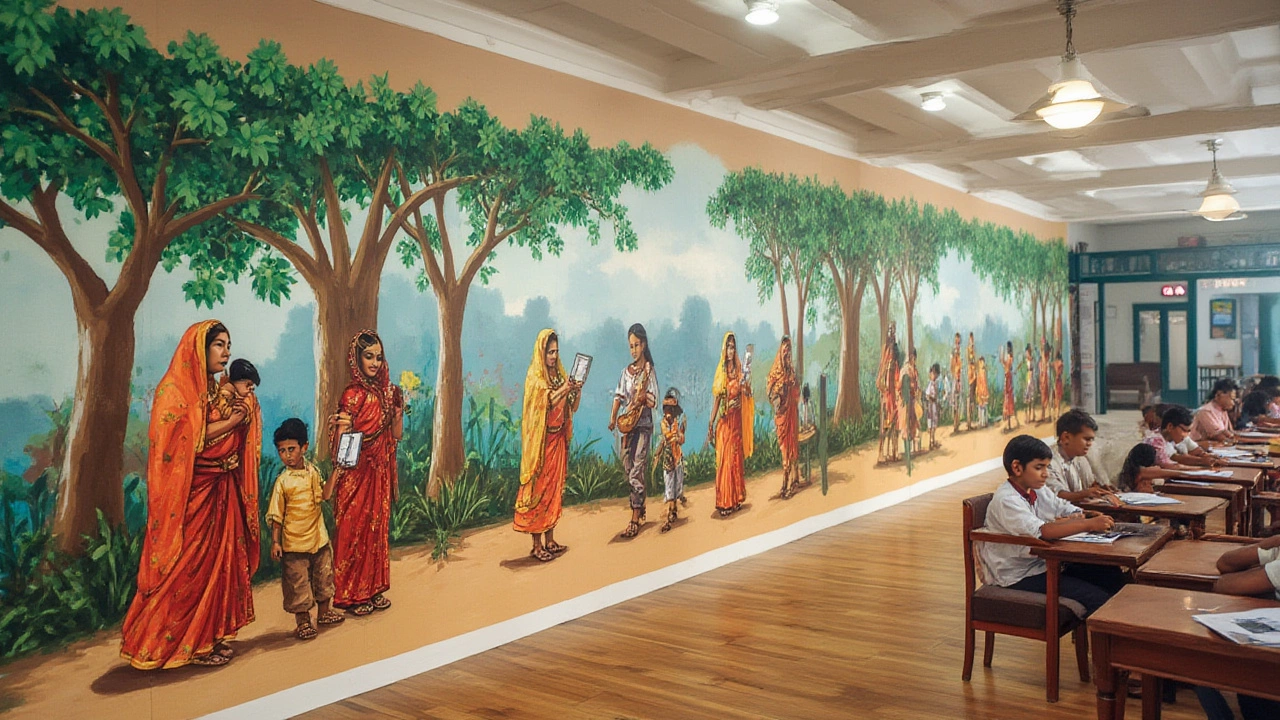Teacher Training Schools: Common Names, Explained Simply
 Jul, 17 2025
Jul, 17 2025
Ever hear someone mention a “teacher training school” and wonder if it’s just a fancy way of saying college? Or maybe you’ve seen the term “normal school” on an old sign and felt a little confused. Turns out these places go way back, and they’ve got a handful of names that usually mean the same thing. Grab a snack and stick with me while I dig into what these schools are really about, what they’re called, and why they matter more than most folks realize.
What Is a Teacher Training School and What Are Its Other Names?
Let’s clear up the main confusion first: a teacher training school is simply a place where people are trained to become teachers. But the names get tricky depending on where and when you look. Historically, the most common other name for a teacher training school is "normal school." Strange, right? The term "normal" isn’t about being regular—it comes from the French phrase 'école normale,' which means ‘a school to set the norm or standard.’ Yup, the idea was to train teachers so they could set the norm in classrooms across the country.
Back in the 19th and early 20th centuries, these normal schools popped up everywhere—from the U.S. to Europe to Asia. Their purpose was pretty focused: teach people how to teach, and do it really well. Fast-forward to today, most "normal schools" have either changed their names to teacher colleges, institutes of education, or, in a lot of cases, have become part of bigger universities as colleges and faculty of education. But ask any older teacher and they’ll probably remember the term “normal school” fondly. It stuck around in school names for decades.
Here are some other names you might run into:
- Teacher’s College
- Institute of Education
- Faculty of Education
- School of Education
- Teachers’ Training Institute (TTI)
If you hear someone mention a “Pedagogical Institute,” especially in countries that use British English, that’s yet another synonym. No matter the label, it’s still about training future teachers to step into classrooms with confidence and know-how.

How Teacher Training Schools Changed Education: The Real Impact
It might seem like common sense now, but formal teacher training wasn’t always the norm. Before these institutions showed up, most teachers just learned by doing—or, honestly, just did whatever teachers before them did. Imagine walking into a class with no clue about child psychology, classroom management, or even the subject you’re teaching. Yikes. That all shifted with the arrival of teacher training schools.
Normal schools and their modern equivalents brought in a whole new era of education. They didn’t just teach subject matter (like math or reading); they built the foundation for what teaching itself should look like. This includes things like:
- Child development and psychology (why do kids act like that? Now you know)
- Best teaching methods (so students actually learn, not just memorize)
- Classroom management (wrangling a room full of energetic third graders is no joke)
- Assessment strategies (testing in creative, fair ways)
- Inclusivity techniques (so every student feels seen and heard)
- Practical training through internships and student teaching
| Aspect | Before Teacher Training Schools | After Teacher Training Schools |
|---|---|---|
| How teachers learned | Mostly on the job, copying past teachers | Through organized programs, study, and practice |
| Focus | Mainly on subject knowledge | On how to teach, manage students, and support learning |
| Standardization | Low; every class was different | Higher; shared best practices and curricula |
| Impact on society | Mixed teaching quality | Consistent, higher quality, better outcomes for kids |
After the rise of teacher training schools, countries that invested in them (like Finland, Japan, and Canada) started to see real results. Literacy rates soared. More students finished school. Schools became safer, friendlier, and more inclusive. This transformation wasn’t just academic, either; it lifted millions out of poverty and built smarter, healthier communities.
And let’s not forget—teaching is tough. Teacher burnout is a thing. That’s why these schools also train future educators on self-care, mental health, and how to navigate tricky parents or tough administrators. The ripple effects are real, and if you ask around, many lifelong educators swear their favorite memories happened during their training days. There’s a kind of solidarity in learning how to run a classroom together, make lesson plans, and celebrate those first wins.

What to Know if You’re Thinking About Teacher Training Schools
Maybe you’re thinking about teaching, or maybe you’re just curious why your teacher friend seems super obsessed with their training school days. Either way, picking the right training program is a big deal. So what makes a good teacher training school?
First, look at their track record. Do their graduates get hired? Are they respected by local school districts? Good schools will show off alumni success stories, student satisfaction surveys, and job placement data. A red flag is when you can’t even find that info on their website. Another key thing: hands-on experience. Programs that focus only on theory and skip student teaching are missing the whole point. You want to spend time in real classrooms, under the guidance of a seasoned teacher, before you’re ever responsible for your own group of students.
Strong programs partner with local schools, give fair feedback, and support you even after graduation. They tackle real-world topics—like technology in education, how to reach students with disabilities, or teaching in tough neighborhoods. Pro tip: Ask current or former students what they liked and didn’t like about the program. If their answers feel honest, you’ve probably landed in a solid place.
Here are some practical tips if you’re shopping for a program:
- Check accreditation. Is the school recognized by a national education board?
- Ask about support for passing teacher certification exams. Nobody likes surprises on test day.
- Explore specialization options—early childhood, elementary, high school, special ed, and more.
- Look into scholarships or financial support. Teaching is a noble job, but nobody wants to start out drowning in debt.
- Figure out where you want to work—different regions have unique requirements.
- If possible, visit campus or join a virtual info session. Vibes matter!
And there’s this: Teachers shape kids, but training schools shape teachers. By the way, if you ever want to spot a teacher at a party, just mention your favorite teacher from childhood. Instantly, you’ll have someone sharing a wild story from their own training school days, laughing about mishaps, and maybe beaming with pride. It all starts there—at the place with many names but one huge purpose.